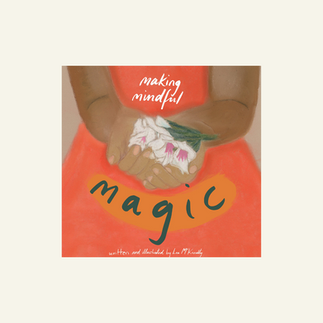National High-Five Day takes place this week on Thursday April 21st!
At Wymbin, our purpose is to raise a future generation of confident, empowered, and resilient humans. We love to share 'high five's' in lots of different ways to encourage our students and celebrate their unique contributions to our classroom.
In our Preschool and Kindergarten classes, we start each and every single day with a positive affirmation such as, "I am a great friend: I will show kindness in my classroom today." While verbal cues are one way to create positive encouragement, every person is different! Some students might relate more to a physical cue.
In a world where we are adjusting to social boundaries and respecting everyone's comfort levels, how can we evolve the high-five, and why are they so important in the first place?

The importance of high-fives in everyday life: they create trust which strengthens cooperation.
Did you know?
The importance of the high-five was first acknowledged in sports.
Dr. Dacher Keltner’s research team from the University of California Berkeley recorded the number of high-fives (and similar touches, e.g., fist bumps) that had occurred during each NBA team’s first game of the 2008-2009 season.
The teams were ranked based on who had the most high-fives, and this was then compared to how far each team made it in the playoffs. The researchers learned that the teams with the lowest amount of high-fives were not as successful as the teams with the highest. In fact, the two teams that tied for the most high-fives were the previous year’s NBA champions and the current NBA champions.
The next season, the connection was observed on an individual scale. Steve Nash was the NBA’s Most Valuable Player for the second time and led the league in assists. His secret? He also led the league in high-fives, averaging 239 high-fives per game. That's almost five per minute! Though research on this ‘high-five magic’ tends to be in sports, it does not mean that it is not transferable to other areas of your life.

The high-five thrives on efficient affirmation sharing. These little bits of positive reinforcement are able to show someone that they should keep doing whatever they are doing. If we take a look at an earlier example, Steve Nash high-fived his teammates again and again, even if they missed a shot. Why? Because he needed a quick yet meaningful way to show his teammates he appreciated their effort, no matter the outcome.
High-fives are a great way to show someone that you and someone else trust each other. A high-five does not have to be two hands tapping in the air or a big, showy gesture. It is about what it represents - encouragement!
Unlike sight and hearing, which require training to use, touch is a sense that people can use as soon as they are born as a source of communication. This is why a simple touch from a parent can calm their baby. As Keltner explains, “you can communicate really important emotions like gratitude, compassion, love, and anger just through brief touches.” This means touch is the first form of acknowledged positive or negative interaction in one’s life and acts as a contributing factor in sharing emotion.
It is very important to know that when you touch someone, it is done with mutual trust and the right intentions - how you touch someone can convey emotion just as well as words can. The touch in a high-five is a great way to express your positive, fun emotions with someone else!
It is pretty clear that touch plays a big factor in positive reinforcement. You choose the emotions and energy your touch gives to others. So, make them good ones! Remember, high-fives are a privilege - make sure everyone high-fiving wants to do so.
Many people value the support from a high-five or the comfort of a hug, but there are still a lot of people who are not comfortable with or are not ready to be touched. For those people, unexpected/unwanted touching can have the opposite of your intention and act as a form of negative reinforcement. And that is ok! Everyone has their own comfort zone and it needs to be respected. The best thing to do is ask before you give ‘em 5!

Here are some of my favorite high-fives and high-five alternatives:
Elbow bumps and foot taps
Sometimes your hands are full or you want to change it up, tap a covered part of your body!
Try Sign Language
A great and inclusive way to learn a new way to communicate.
Create a New Handshake
Throw in some fistbumps, finger snaps, and some razzle-dazzle to share with your friends!
Do an Air-Five
All the effort and intent of a high-five but from anywhere you want. Just make eye contact and Air-Five away! The jellyfish, thumbs-up, and heartbeat are my favourites.
The Verbal High-Five
There is nothing like a verbal affirmation to show your support.
The Self-Five
Sometimes you are alone and you do something awesome. Give yourself some self-praise and a tap on the back!
- Creighton Thicke-Rattray

Creighton Thicke-Rattray (he/him) is a Marketing & Brand Manager in Brampton, ON. He has been a part of Wymbin's Marketing Team for over a year and has been practicing yoga for 14 years.
When he is off the clock, he swims & competes with COBRA Masters Swimming and produces music for local musicians.
Follow Creighton on social media:
@thatsocreighton
//
Visit our online shop!








Comments